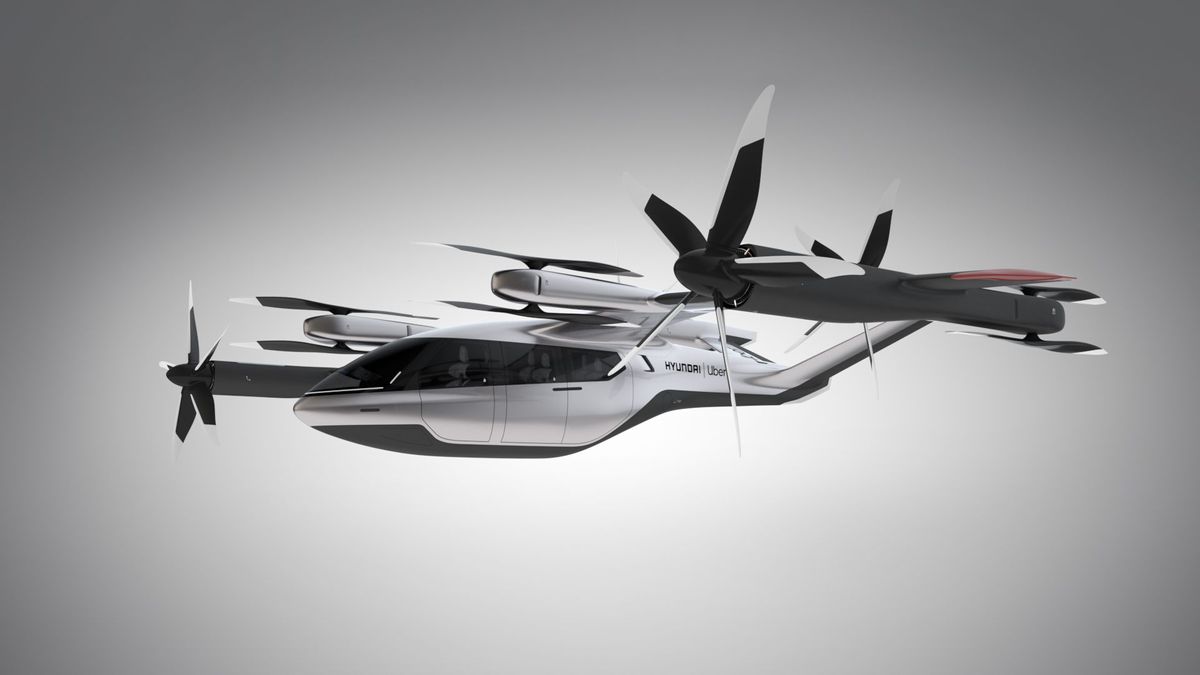Uber and Hyundai collaborate to develop flying taxis

A few minutes every morning is all you need.
Stay up to date on the world's Headlines and Human Stories. It's fun, it's factual, it's fluff-free.
At the Consumer Electronics Show (CES) held in Las Vegas this past week, Uber and Hyundai revealed a full-scale model for an electric flying vehicle that they say customers will be able to summon through Uber’s app in future.
The companies announced their collaboration for the Uber Air Taxi, with Hyundai expected to bring automotive-scale manufacturing to the collaboration by handling the development and deployment of the aircraft. Uber will provide support, ground connections and the customer interface.
Hyundai’s concept aircraft, the S-A1, is designed to cruise at a speed of 180 mph (289.68 km/h), at a height of 1,000 to 2,000 ft (304.8 to 609.6 m), and would take trips of up to 60 mi (96.56 km). The aircraft is designed to seat four passengers and a pilot, although it would eventually be made capable of autonomous flight.
“We’ve been making steady progress towards a goal of launching Uber Air by 2023,” says Eric Allison, head of Elevate, Uber’s aerial ride-hailing division. Chung Eui-sun, executive vice chairman of Hyundai, expects commercialization of urban air mobility service in 2028, saying it takes time for laws and systems to be in place.
Investment into flying cars
Uber has also partnered with Boeing subsidiary Aurora Flight Science, helicopter manufacturer Bell and the Brazilian aerospace manufacturer Embraer. Uber has also signed agreements with the US National Aeronautics and Space Administration (NASA) to further the development of safe and efficient air transportation.
Other companies such as Daimler and Toyota have also entered the flying vehicle territory by investing in startups. Google co-founder Larry Page has invested into several startups, including Kitty Hawk, Zephyr Airworks and Opener.
Analysts at US investment bank Morgan Stanley expect the global market for air taxis to be between $1.4 and $2.9 trillion by 2040. The most conservative estimates have the global market value at $615 billion.
Possible hurdles
Hyundai and Uber will have several major hurdles to overcome before their air taxis can become a reality. These include developing the aircraft with all their technical and engineering challenges, and making sure they are not noisy, are safe and economically viable.
“The overall cost to produce and operate UAM (urban air mobility) vehicles should be really low enough for everyone to enjoy the freedom to fly,” says Shin Jai-won, head of the Urban Air Mobility Division at Hyundai Motor Company. Before air taxis take flight, they’ll have to be certified by the US Federal Aviation Administration (FAA) – a process that could take years of testing to ensure the aircraft are safe and reliable.
Have a tip or story? Get in touch with our reporters at tips@themilsource.com




Comments ()